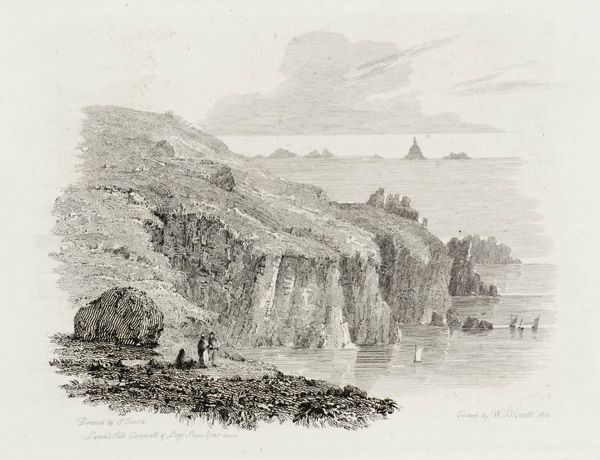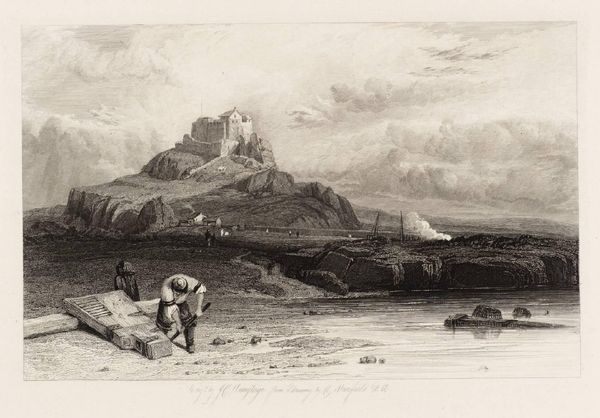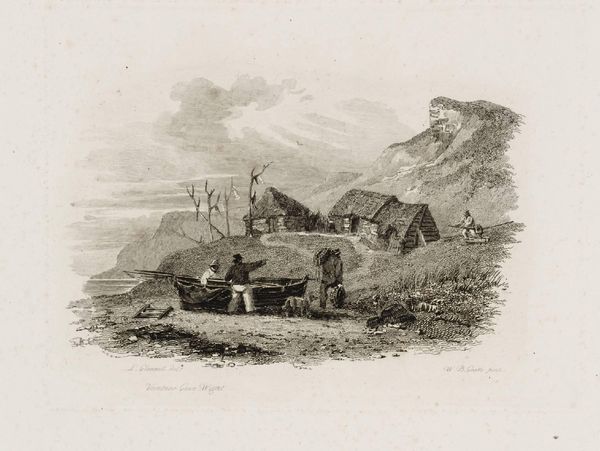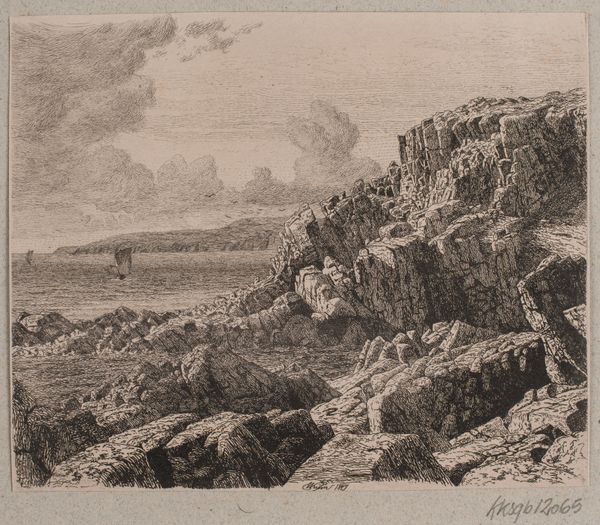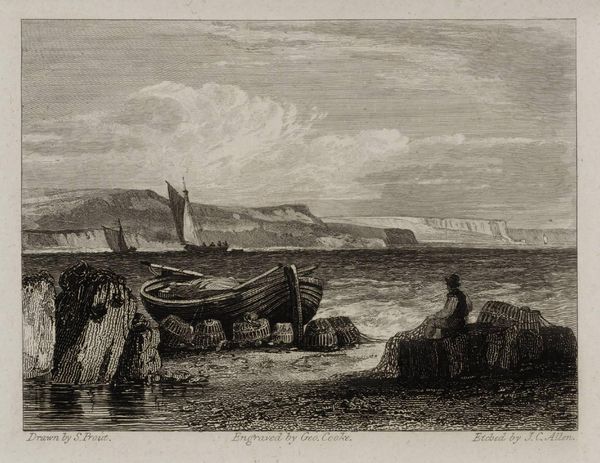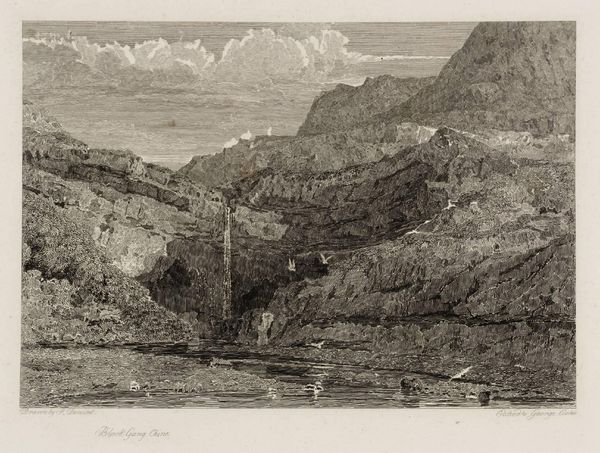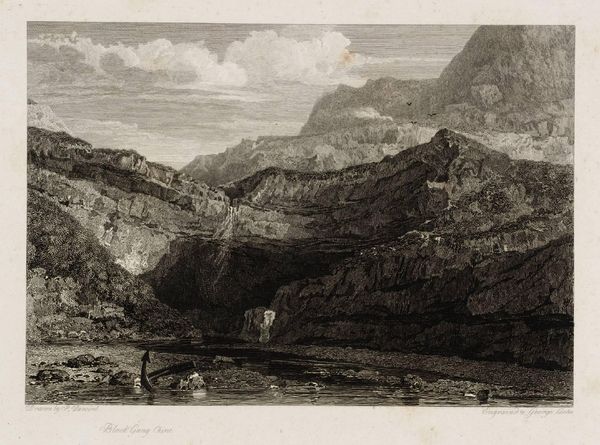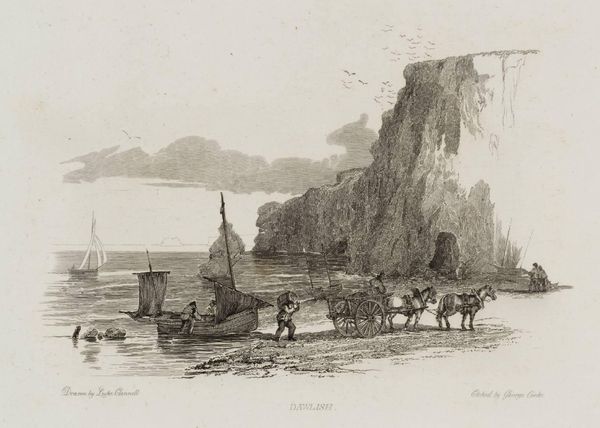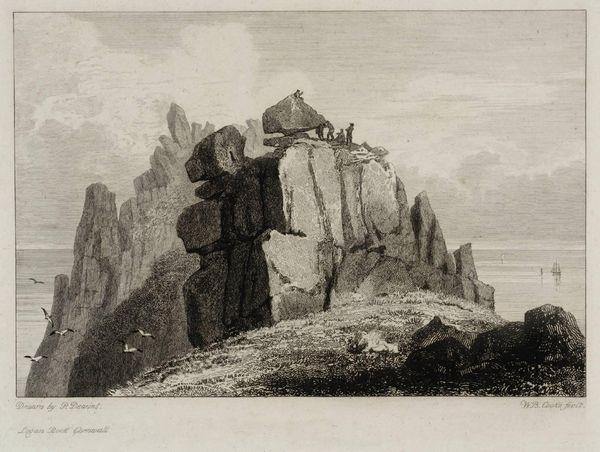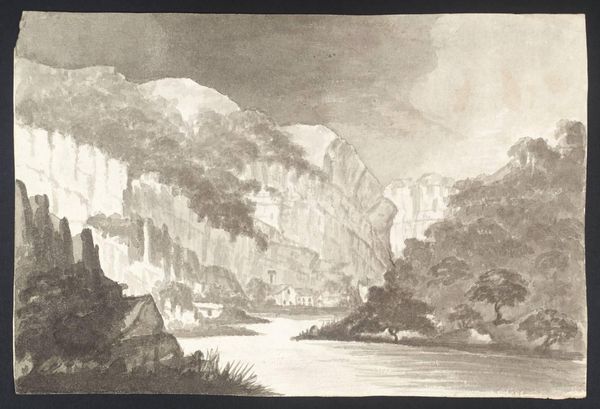
Dimensions: image: 131 x 166 mm
Copyright: CC-BY-NC-ND 4.0 DEED, Photo: Tate
Editor: This is Samuel Owen’s "Land’s End Cornwall, with Long-Ship’s Light-House." It’s a print, and the starkness of the cliffs against the sea evokes a feeling of isolation. What historical context shapes your interpretation? Curator: This image reflects the burgeoning interest in the picturesque in the early 19th century. How does the inclusion of the Longships Lighthouse speak to the increasing importance of maritime trade and safety? Editor: It suggests a human effort to tame the wildness, making the landscape both beautiful and functional. It's interesting to consider how these types of images might shape public perception of coastal regions during this time. Curator: Precisely! These images played a vital role in constructing a national identity tied to maritime power and exploration. What do you make of the figures placed within the landscape? Editor: They seem dwarfed by the scale of the cliffs, reinforcing the sublime power of nature, but also the human desire to witness and document it. I hadn't considered its role in shaping national identity before. Curator: Indeed, landscape art is rarely just about the landscape itself. It's about who gets to see it, who controls it, and what stories are told about it.
